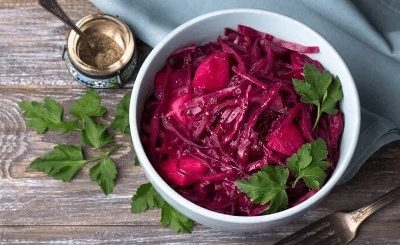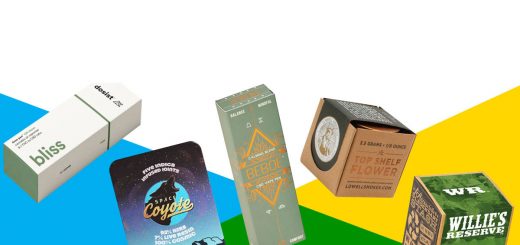Where Are Many Fibers In? Top 30 Products!

Fiber is an extremely important nutrient. Eating fiber-rich food is therefore a matter of course. However, it is difficult for many to consume enough fiber-rich food on a daily basis. Then there is only 1 question left, what is a lot of fiber?
What is a lot of fiber? In many plant products namely:
- Only vegetable products contain fiber.
- Most fiber is found in whole grains, legumes, nuts, seeds, and grains.
- Then come fruits and vegetables.
Dietary fiber is found in many daily products. You just need to know which products it contains so that you can make the right choice in the supermarket. This article is about products that are high in fiber and what it does to your body.
Index
What is a high fiber diet?
Fibers are parts of the plant that are not digested in the small intestine. The particles pass directly to the large intestine. Fiber-rich food is therefore food that is rich in plant particles. In the large intestine, these particles can dissolve (=ferment) or remain as a whole (=not ferment).
Fermenting fibers
These are particles that dissolve in the large intestine and ensure a good intestinal flora. This in turn contributes to good bowel movements and the prevention of diseases.
Non-fermenting fiber
These are fibers that do not dissolve in the large intestine. They absorb a lot of fluid and thus increase the contents of the large intestine. This makes bowel movements much easier.
Most fiber-rich foods contain fermenting and non-fermenting particles.
What is fiber good for?
Fiber-rich food can prevent digestive complaints. Existing complaints can be reduced or remedied by a fiber-rich diet. The fibers have a positive effect on bowel movements because they bind moisture and improve intestinal flora.
When fiber is eaten, it goes without saying that there should also be enough to drink. Normally, a body should get 1.5 liters of fluid. When really paying attention to fiber intake, it is advisable to drink at least 2 liters per day.
Fibers also provide a ‘full’ feeling. The fibers that absorb moisture in the large intestine swell and this creates a feeling of fullness. This full feeling ensures that there is less snacking, which in turn has a positive effect on health.
Fiber ensures that carbohydrates from food are absorbed more slowly in the intestines, so that blood sugar remains more stable.
How much dietary fiber per day?
So, eating fiber is essential for healthy digestion. The guideline is that an adult should eat between 30 and 40 grams of fiber per day. Below is a table of fiber advice per age category.
| Who? | Fiber advice |
| Adult men and boys from 14 years old |
40 grams of fiber/day |
| Adult women and girls from 14 years old |
30 grams of fiber/day |
| Boys from 9 to 13 years | 30 grams of fiber/day |
| Girls from 9 to 13 years | 25 grams of fiber/day |
| Boys from 4 to 8 years | 25 grams of fiber/day |
| Girls from 4 to 8 years | 20 grams of fiber/day |
| Children from 1 to 3 years | 15 grams of fiber/day |
However, it is difficult for most people to comply with this advice. We think we eat a lot of fiber, but in practice this is disappointing. For example, a whole-wheat sandwich contains 1 gram of fiber and so does a glass of fruit juice.
What are high fiber products?
Only plant-based foods, such as grain products, seeds, beans, peas, vegetables and fruits, contain dietary fiber, referred to as fiber for short. There is no fiber in animal products. A fiber-rich diet is therefore a plant-based diet.
Products with a lot of fiber
Fiber is only found in plant products. To get a clear overview of fibers per product, the products are grouped in:
- Bread and bread substitutes.
- Cereals and pasta
- Vegetable
- Fruit
- Legumes such as beans
- Nuts, seeds, and kernels
Bread and bread substitute with a lot of fiber
| Product | Fiber/100 grams |
| Crispbread, whole wheat | 13.7 |
| Rye bread, dark | 8.5 |
| Muesli with fruits | 8.5 |
| Rusk, whole wheat | 8.5 |
| Bread, whole-wheat with seeds and kernels | 7.9 |
Whole grain products contain a lot of fiber. White bread, for example, contains only 2.6 grams of fiber/100 grams compared to 7.9 grams of fiber/100 grams for wholemeal bread.
Grains and pasta with a lot of fiber
| Product | Fiber/100 grams |
| Barley | 5 |
| bulger | 4.5 |
| Pasta, whole wheat | 4.2 |
| Oats | 3.3 |
| Couscous, whole wheat | 3 |
Here too, the whole grain contains much more fiber
It is the same with white rice and brown rice. And also with white pasta and whole wheat pasta. When the term whole grain stands for a product, it is always high in fiber.
Vegetables with a lot of fiber
| Product | Fiber/100 grams |
| Celeriac | 4.9 |
| Parsnip | 4.9 |
| broad beans | 4.7 |
| garden peas | 4.5 |
| sauerkraut | 3.2 |
Every vegetable contains a relatively large amount of fiber, with the exception of vegetables that contain a lot of moisture such as cucumber, pickle, and tomato.
Fruit with many vez els
| Product | Fiber/100 grams |
| Avocado | 4.3 |
| raisins | 3.7 |
| Blackberries | 3.1 |
| raspberries | 2.5 |
| Blueberries | 2.4 |
The most sold fruits are apple, pear and banana. These contain respectively 2, 2.2, and 1.9 grams of fiber/100 grams.
Legumes with a lot of fiber
| Product | Fiber/100 grams |
| capuchins | 8.9 |
| Kidney beans | 7.5 |
| Kidney beans | 7 |
| chickpeas | 6.7 |
| White beans | 6,5 |
We can classify legumes under fiber bombs. All legumes contain a lot of fiber.
Nuts, seeds, and kernels with a lot of fiber
| Product | Fiber/100 grams |
| pistachios | 9.5 |
| pumpkin seeds | 8.5 |
| hazelnuts | 8.2 |
| macadamia nuts | 8 |
| sunflower seeds | 7.4 |
The nuts, seeds and kernels are also bursting with fiber. The advantage of this product group is that they can easily be eaten as a snack. You don’t have to prepare it, you can just take a hand out of the pot and you’ll have a lot of fiber again.
How do I get more fiber?
To get more fiber, you can do a number of things that are quite simple and easy to fit into your daily routine.
- Eat fiber from whole foods. Go for fresh as much as possible and make this your dish at home. Many pre-processed products also contain a lot of sugars, which in turn have a laxative effect in the intestines.
- In the supermarket, don’t believe the screaming front of the package like the slogan ‘with added fiber’. Always check the ingredients list and the nutritional list. Don’t be fooled by the packaging.
- Go for whole grain. Whatever you buy on a daily basis, try the whole grain version. As indicated in the tables, whole wheat contains much more fiber.
- Eat a varied number of different products. Do not eat a pasta meal every day, but vary this with, for example, brown rice and potatoes. Each product contains different fibers, each with its own benefits. As always, eat a varied diet and you will get everything the body needs.
- Eat fruit or nuts as a snack. If you feel hungry between meals, eat nuts or fruit. The many fibers stop the feeling of hunger and it is also good for you.
- Try avocado in between. Half an avocado contains 5 grams of fiber. For example, use it in a salad.
- Include legumes in your diet. Legumes are eaten relatively little while they contain a lot of fiber. So eat chili sin carne or a bean dish with brown rice more often.











